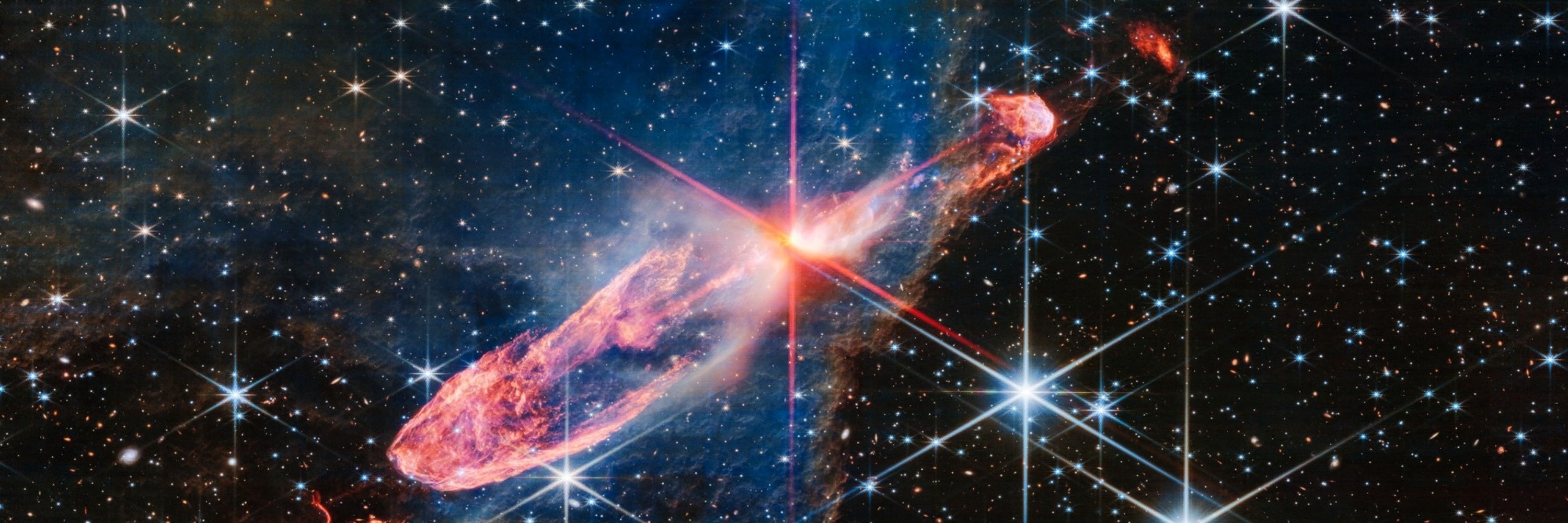Shoemaker-Levy 9: Interplanetary Impactwww.youtube.com Comet Shoemaker-Levy 9 left an indelible mark on our understanding of the cosmos when it collided with Jupiter. Discover the significance of this event and t...
Kelly Lepo
Astronomer | Science communicator | Adult Lisa Simpson
Education and Outreach Scientist at the Space Telescope Science Institute supporting JWST
Personal account — Views are my own
Also on Mastodon: @[email protected]
Education and Outreach Scientist at the Space Telescope Science Institute supporting JWST
Personal account — Views are my own
Also on Mastodon: @[email protected]
2024 JSALT Plenary Talkwww.youtube.com
Guest Post: A New Take on a Comet’s Impact for Hubble’s 30thilluminateduniverse.org Judy Schmidt is an amateur astronomer and tireless image processor of the Hubble archive. This post details her recent work on the impact of Shoemaker-Levy 9 with Jupiter for the BBC/Discovery Scie…
Replaying the Tape of Academia: Fourteen Alternative Practices for the Physical Sciencesagupubs.onlinelibrary.wiley.com Modern academic practices reflect elements of both contingency and determinism
Consideration of alternative practices can guide within-system change and large-scale restructuring
Inside the Baltimore office where breathtaking views of the universe beginwww.thebaltimorebanner.com The only people on Earth who regularly communicate with James Webb Space Telescope work in a nondescript concrete office building much closer to home — on the Johns Hopkins University campus in Baltim...
Arp 142 Hubble to Webb Fadewebbtelescope.pub
The Pillars of Creation: Multiwavelength Explorations in 3Dwww.youtube.com Frank Summers, Space Telescope Science Institute The Pillars of Creation in the Eagle Nebula is one of the most iconic images in astronomy. It was popularize...
The Pillars of Creation and the Interplay of Stars and Dustwww.youtube.com This scientific visualization explores the iconic Pillars of Creation in the Eagle Nebula and the various ways that stars and dust are intertwined in the process of star formation. In developing the contextual story and the three-dimensional model, the video uses data from science papers, the Hubble Space Telescope, the Webb Space Telescope, the Spitzer Space Telescope, and the Chandra X-ray Observatory. The sequence begins with zoom from our Milky Way Galaxy down to the Pillars of Creation, a scale change of more than a factor of 10,000. Along the way, the general distribution of stars and dust clouds on the sky leads to the specific details of the star-forming Eagle Nebula. The stellar winds and high energy light from hot young stars at the center of the nebula are responsible for creating the pillars' shapes. The video then enters a journey into the three-dimensional structure of the pillars. Based on scientific results, astronomers and artists modeled this striking formation in three dimensions and created a sequence that flies past and amongst the pillars. What can look like 3 connected pillars in a two-dimensional image separates into four dust clouds with ionized gas streaming away from each. As the virtual camera files through the model, the view shifts back and forth between Hubble's visible light and Webb's infrared light perspectives. The audience gains an appreciation of the contrasting observations and how the telescopes complement each other by probing different scientific aspects of the clouds. The Pillars of Creation nickname derives from the fact that stars are forming within these clouds. The visual tour highlights various stages of star formation including an embedded protostar at the top of the central pillar, bipolar jets from a unseen forming star in the upper part of the left pillar, and a newborn star in the middle of the left pillar. This visualization is a product of the AstroViz Project of NASA's Universe of Learning. A shorter non-narrated visualization that focuses on the experiential flythrough of the pillars is available as "The Pillars of Creation: A 3D Multiwavelength Exploration".
New Analysis Finds No Evidence for Tryptophan in Interstellar Cloud - AAS Novaaasnova.org Was tryptophan found in the interstellar medium, as reported last year? New research finds that the search must go on.
Summer solstice: What's behind earth's tilt toward the sun?www.wypr.org We go On the Record with Kelly Lepo from the Space Telescope Science Institute to learn about the summer solstice, how to measure the tilt of the earth, and fascinating findings from the James Webb Sp...
NASA’s Hubble Restarts Science in New Pointing Mode - NASA Sciencescience.nasa.gov NASA successfully transitioned operations for the agency’s Hubble Space Telescope to an alternate operating mode that uses one gyro, returning the spacecraft to daily science operations Friday. The te...
The American Astronomical Society (AAS) 244 meeting in 2 minutes and 50 secondsyoutu.be A walkthrough of the Monona Terrace conference center and the exhibit hall at the 244th meeting of the American Astronomical Society. This 11 minutes of foot...
Name a Quasi-Moon Contest!woobox.com Radiolab is partnering with the International Astronomical Union to launch a global naming contest for one of Earth’s quasi-moons! Submit one of your own (now through September). It’s your chance to m...
